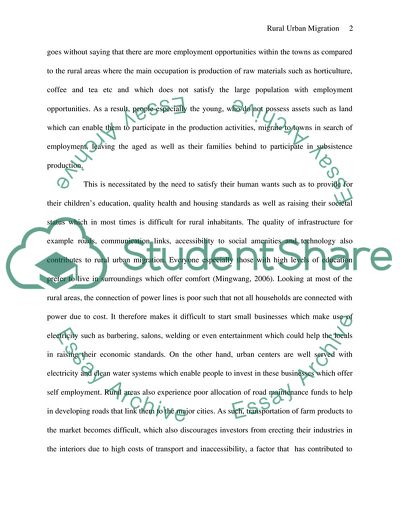Cite this document
(Rural-Urban Migration Term Paper Example | Topics and Well Written Essays - 2878 words, n.d.)
Rural-Urban Migration Term Paper Example | Topics and Well Written Essays - 2878 words. Retrieved from https://studentshare.org/politics/1730505-term-paper-on-why-and-how-do-people-migrate-from-rural-areas-to-third-world-cities-suggest-policies-that-might-slow-down-the-rate-of-rural-to-urban-migration
Rural-Urban Migration Term Paper Example | Topics and Well Written Essays - 2878 words. Retrieved from https://studentshare.org/politics/1730505-term-paper-on-why-and-how-do-people-migrate-from-rural-areas-to-third-world-cities-suggest-policies-that-might-slow-down-the-rate-of-rural-to-urban-migration
(Rural-Urban Migration Term Paper Example | Topics and Well Written Essays - 2878 Words)
Rural-Urban Migration Term Paper Example | Topics and Well Written Essays - 2878 Words. https://studentshare.org/politics/1730505-term-paper-on-why-and-how-do-people-migrate-from-rural-areas-to-third-world-cities-suggest-policies-that-might-slow-down-the-rate-of-rural-to-urban-migration.
Rural-Urban Migration Term Paper Example | Topics and Well Written Essays - 2878 Words. https://studentshare.org/politics/1730505-term-paper-on-why-and-how-do-people-migrate-from-rural-areas-to-third-world-cities-suggest-policies-that-might-slow-down-the-rate-of-rural-to-urban-migration.
“Rural-Urban Migration Term Paper Example | Topics and Well Written Essays - 2878 Words”, n.d. https://studentshare.org/politics/1730505-term-paper-on-why-and-how-do-people-migrate-from-rural-areas-to-third-world-cities-suggest-policies-that-might-slow-down-the-rate-of-rural-to-urban-migration.


